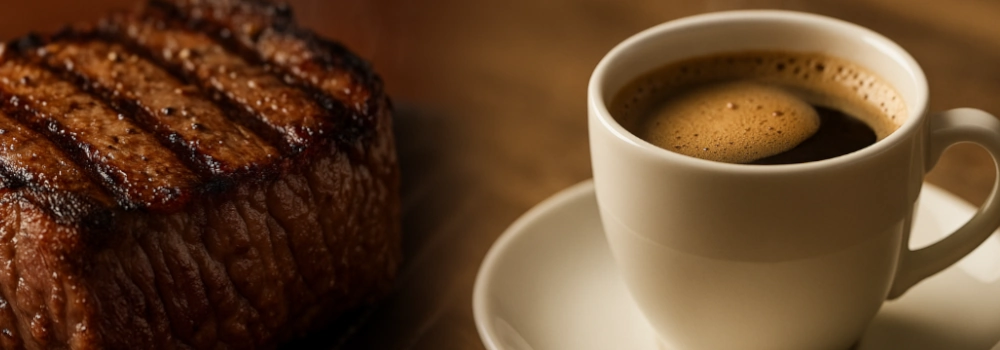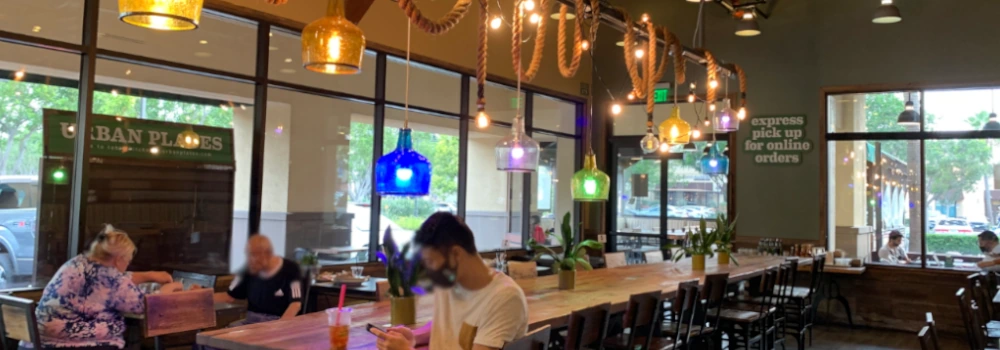
Restaurant operators are no strangers to cost volatility, but 2025 has brought two particularly sharp challenges: record-high beef prices and a surging coffee market. Together, these two staples are reshaping menu strategies and profit margins across the U.S.
Understanding what’s driving the spike — and how to respond strategically — is critical for restaurant survival and success.
Why Beef Prices Are Hitting Record Highs
The U.S. cattle herd has shrunk to 86.7 million head, the smallest total since 1951, according to the U.S. Department of Agriculture (AGDaily). This decline stems from prolonged droughts, high feed costs, and ranchers liquidating their herds rather than rebuilding them.
As a result, commercial beef production is projected to fall nearly 2% in 2025, tightening supply even further (The Cattle Site).
Consumers are feeling it at the checkout line. The average retail price of ground beef reached $6.12 per pound in June 2025, a 12% increase year-over-year, according to the Associated Press (AP News).
For restaurants, this means sharper food cost pressures on burgers, steaks, and beef-forward menu items — particularly for fast-casual and full-service operators that depend on meat as a core offering.
Coffee Prices Surge to Multi-Year Highs
Coffee has also experienced a surge in costs. Arabica coffee futures are up about 62% year-over-year as of October 2025, according to Trading Economics (Trading Economics).
Global supply is under stress: Brazil’s drought conditions, erratic rainfall, and higher fertilizer costs have tightened the market. Roasters in major coffee-producing countries, such as Brazil and Colombia, have raised prices significantly to offset the rising costs of beans (Reuters).
Even in countries with a deep coffee culture, such as Sweden, cafés have raised drink prices by 10–15% to cover higher import and production costs (The Guardian).
For U.S. cafés and restaurants with coffee programs, the increase in bean and logistics costs is already prompting menu price adjustments or reformulated offerings.

What This Means for Restaurants
Beef and coffee are two of the most widely used — and emotionally resonant — ingredients in the foodservice industry. When their prices rise, operators feel it immediately in their bottom line.
Key impacts include:
- Margin compression as costs outpaces menu prices.
- Menu re-engineering needs to rebalance profitability.
- Customer pushback risk if price hikes are not communicated effectively.
- Procurement stress due to long lead times and uncertain supplier pricing.
For many operators, the question isn’t whether to adapt — it’s how quickly.
How Restaurants Can Respond Strategically
1. Audit and Re-engineer the Menu
Run a menu profitability analysis to identify which dishes have the highest cost ratios. Items like premium steaks or signature espresso drinks may need re-pricing or re-portioning.
- Swap in chicken, pork, or plant-forward entrées where possible.
- Use blended ingredients — for example, mixing beef with mushrooms in burgers — to stretch yields.
- Reposition expensive cuts as limited-time features or premium upsells.
2. Reimagine Your Coffee Program
- Rotate origins seasonally and feature mid-tier beans alongside specialty roasts.
- Offer tiered coffee pricing (“house blend” vs. “single origin”) to preserve upsell margins.
- Introduce combo deals — pairing coffee with bakery items — to sustain perceived value.
3. Lock in Supplier and Contract Options
- Negotiate forward contracts or fixed-price agreements with distributors to stabilize costs and ensure predictable pricing.
- Explore regional partnerships — local ranchers or micro-roasters may offer flexibility that larger suppliers cannot.
- Review purchasing schedules for timing advantages, particularly in volatile categories like beef and coffee.
4. Manage Waste and Portioning
With costs rising, waste control is an immediate win.
- Use standardized recipes and digital portion scales.
- Repurpose trimmings and grounds for soups, stocks, or composting initiatives that bolster your sustainability message.
5. Communicate Value to Guests
Transparency builds trust. If your restaurant raises prices, be sure to inform your guests of the reason.
- Use short menu blurbs or social media posts to explain sourcing quality or sustainability commitments.
- Highlight local suppliers and premium sourcing — turning a price increase into a story of care and craft.
Synergy’s Perspective
At Synergy Restaurant Consultants, we’ve guided operators through decades of cost volatility — from grain inflation to pandemic-era supply shocks. What separates resilient restaurants is not avoiding cost increases but anticipating and adapting to them.
Now is the time for:
- Menu engineering reviews every quarter.
- Procurement audits to identify vulnerabilities.
- Staff training to communicate menu value with confidence.
Beef and coffee price volatility may persist through at least 2026, but a proactive strategy implemented today can help stabilize profits tomorrow.
The Bottom Line
These cost surges aren’t passing trends — they’re structural shifts driven by climate, supply, and demand. Restaurants that respond with creativity, data-driven decisions, and transparent communication will maintain margins and guest loyalty even in an inflationary market.
If your restaurant needs expert help navigating menu pricing, supplier negotiations, or cost optimization, Synergy Restaurant Consultants can help you build long-term resilience.
.png)





.png)





